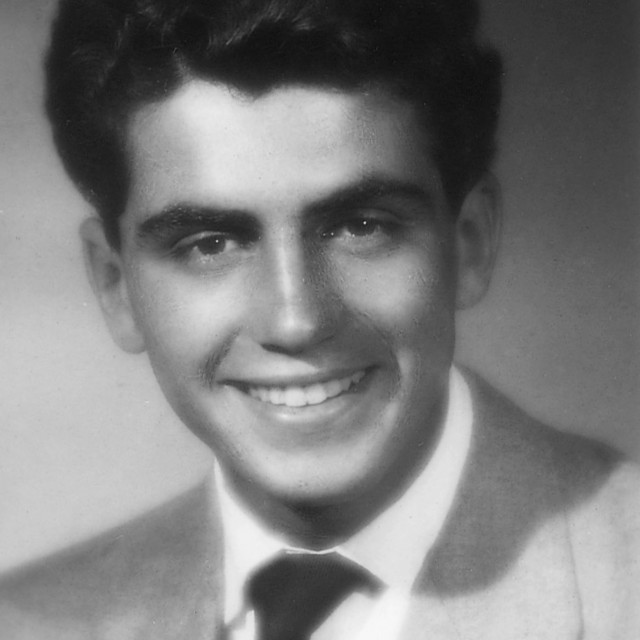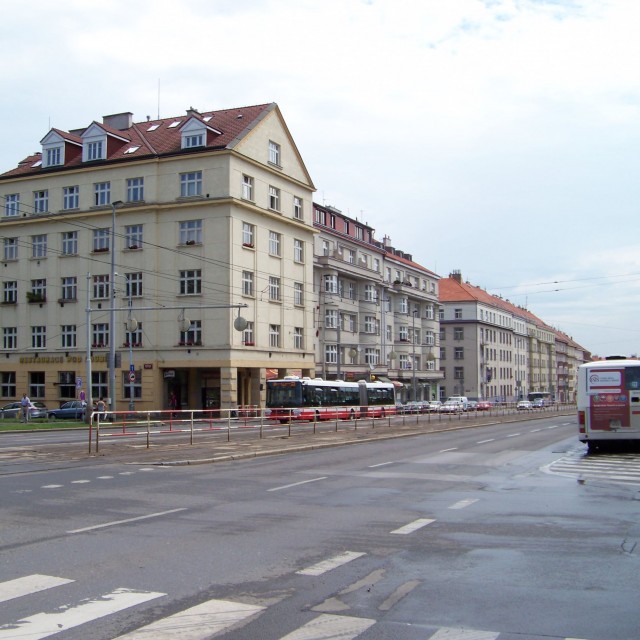Special assignment
Karel Stránský sent his fourteen year old son Jiří to the White Lion resistance unit staff, which resided near their villa in Dejvice, to find out what is going on in Prague during the Prague Uprising of May 1945. The organisation was led by General Vedral, a long-time friend of Jiří Stránský’s father: “I took care of what was necessary and then they gave me a special assignment that I was not supposed to even tell my father. Vedral told me: ‘You’re a clever boy, a Sokol, so you will manage. But don’t tell your father!’ That was an honour for me. Vedral sent me from their staff, which resided on today’s Evropská Street, (called Velvarská at the time), to the Czech National Council branch in the Lesser Town with a message. I was supposed to inform them that free passage across barricades should be granted to the Vlasov army soldiers who were wearing German uniforms upon arrival in Prague. But it was too late; by then the Vlasov men had entered Prague. In the end, it was the Vlasov men who almost got me when I was hiding in Strahov on my way to the Lesser Town. There still were Nazi soldiers there and the Vlasov men would shoot them whenever they met them. But it ended up well and I was safe.” Jiří Stránský was awarded the military 2nd Degree Medal for Merits for his involvement in the Prague Uprising.
Hodnocení
Abyste mohli hodnotit musíte se přihlásit!
Trasy
Příběh není součastí žádné trasy.
Komentáře

Russian Liberation Army (RLA)
The Russian Liberation Army (RLA) formed during the World War 2 as a conglomerate of several military units of Russian prisoners of war who fought against the Stalinist regime on the side of the Nazi Germany – voluntarily or involuntarily. These units became known under the customary name of Vlasov army based on the name of their commander, General Andrey Andreyevich Vlasov. The RLA formed officially in Prague on 14 November 1944. Its first military forces started to form soon after the act at the Münsingen and Hauberg training camps. The units were armed with hand arms and a few soviet T-34 tanks. A separate force within the RLA, the air force received 16 Messerschmitt Me-109 G, 12 Junkers Ju-88, and 5 Heinkel He-111 aircraft. The representatives of the Czechoslovak resistance agreed with the Vlasov army representatives on their involvement in the prepared uprising in Prague. General Vlasov army’s units reached Prague on 6 May 1945 and controlled a large part of the city and suburbs. At the time, discussions with the representatives of the Czech National Council (ČNR), Czech resistance movement and US Army representatives continued. The developments showed that Prague belonged to the USSR area of influence and the Czech authorities distanced themselves from the Vlasov army. On 7 May the ČNR decided to refuse further help and the Vlasov army left Prague. One of the RLA groups was shot by Russian soldiers in Prague-Jinonice. Having left Prague, RLA units progressed to areas controlled by Americans. Certain units of the Vlasov army were surrounded while still in the Soviet occupation zone, but Americans eventually turned even those Vlasov soldiers who had made it to the US zone in to the Soviets, including General Vlasov himself, despite him having written an open letter to the US and UK governments, explaining the RLA’s positions and expressing concerns of the future of his soldiers. RLA soldiers were usually executed shortly after their arrest on the territory of Czechoslovakia. Some of them were executed in the USSR, or sentenced to heavy jail and forced labour in the GULAG.



